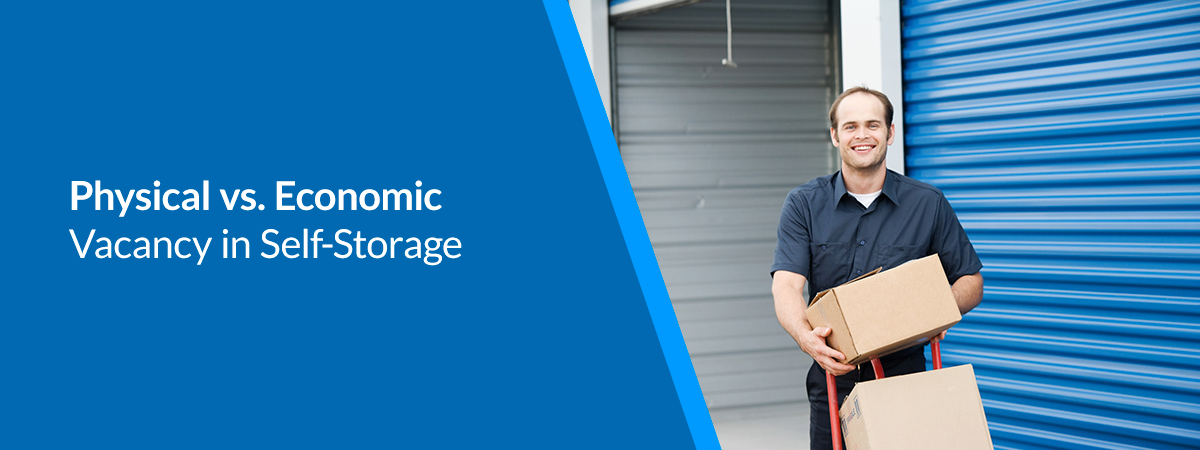Physical vs. Economic Vacancy in Self-Storage

Self-storage owners and managers often rely on physical occupancy rates to gauge their facility’s performance. However, physical occupancy is just one factor that contributes to a property’s health.
Ultimately, the goal of your self-storage business is to maximize your profits. If your facility has good physical occupancy rates but isn’t reaching its full earning potential, you may have economic vacancies.
What Is Economic and Physical Occupancy in Self-Storage?
In real estate, your occupancy rate is the number of units occupied over a specific period. The occupancy rate is usually expressed as a percentage.
There are two types of occupancy rates — physical and economic. Physical occupancy refers to the number of storage units you have filled, while economic occupancy is the amount of rental income your units bring in.
What Is the Difference Between Economic and Physical Occupancy?
Economic and physical occupancy are two sides of the same coin. If you rent a certain number of units at full price, your economic and physical occupancy rates will be the same. But when units aren’t earning their full gross potential, you end up with economic vacancies.
Economic vacancies occur when you don’t charge or receive the full amount for your units. You may be offering discounted rates as a rental incentive, or you may have tenants who are late on their rent. Whatever the cause, economic vacancy can hurt your bottom line.
How to Calculate Physical and Economic Vacancy for Self-Storage
To calculate physical vacancy, divide your total number of units by the number of empty units:
- Physical vacancy rate = Total number of units / number of vacant units.
For example, if you have 50 units and five of them are vacant, your physical vacancy rate would be 10%. Physical vacancy may also be calculated over a longer period. If those five units remained empty for six months while the others remained fully occupied, your vacancy rate for the year would be 5%.
Economic vacancy is the difference between your facility’s gross rent potential and actual rental income. To calculate an economic vacancy percentage, subtract your actual rental income from your gross rent potential and divide that number by the gross rent potential:
- Economic vacancy = (Gross rent potential – actual rental income) / gross rent potential.
For example, if your gross rent potential is $50,000 but you’re only earning $40,000, your economic vacancy would be 20%.
Self-Storage Real Estate Services From Investment Real Estate, LLC
As a self-storage facility owner or manager, it’s important to prioritize your economic occupancy to maximize your profits. IRE offers expert property management assistance to help improve your sales and maintain good economic occupancy rates. Reach out to us today to learn more about our services!

